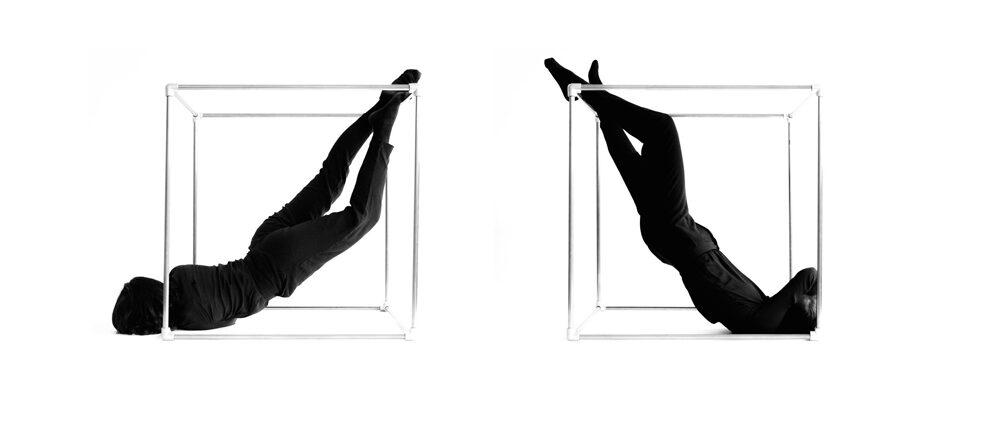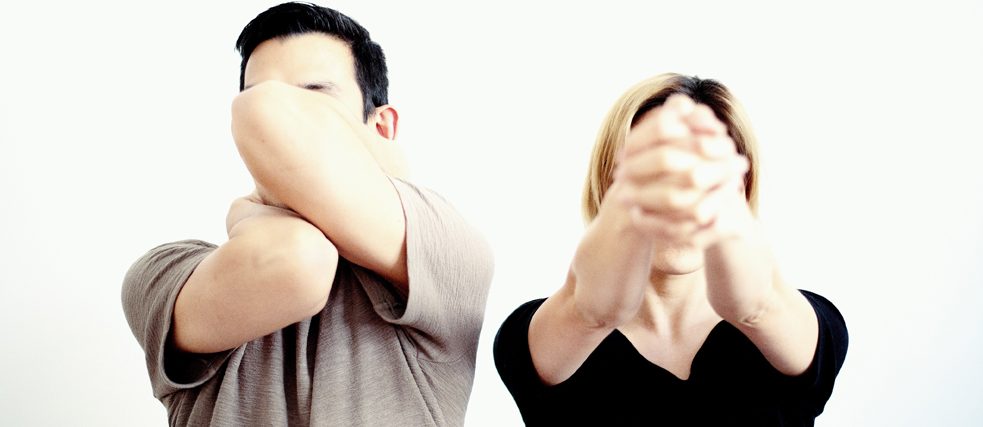Dancer-choreographer Kihako Narisawa
Figurative

The accomplished Frankfurt-based, Japanese-born dancer-choreographer Kihako Narisawa, has been selected for the annual Goethe-Institut Montréal two-month choreographic residency, beginning in September 2018.
By Philip Szporer
Figurative
is a project which is representative of a system, that constitutes questions which address the disparity between idea and word, language and artistic expression.
Have I ever spoken properly?
Kihako Narisawa
As a Japanese artist who has lived and worked in Europe for the past sixteen years, “Have I ever spoken properly?” is my essential question. From the perspective of a non-European, non-native speaker, communication has been a continuous struggle for clarity. It is a multi-layered process, a heated circuit board of accumulating, rewiring, translating, and regurgitating knowledge in the form of sounds, words, slang, gesture, and social habits.
During the residency, I assume that there will be a sort of new integration into Canadian culture. Montréal has been influenced by European culture, especially French culture, and it is the second-largest primarily French-speaking city in the world, after Paris. I lived in France for two years during my dance education at l’Ecole supérieure de danse de Cannes Rosella Hightower, but my collaborator Sonoko Kamimura hasn’t lived in a French-speaking country, and this will be her first encounter with francophone culture. Basically, I’m expecting day-to-day happenings to shape our experience of cultural difference during our stay.
The study of recognizable gestures
You mention the following: “How can we address the disparity between idea and word, language and movement?” Please expand your thoughts on this process and the potential end results.A potential outcome is to become able to communicate with spectators… I find the term “cross-dissolving” to be useful. In filmmaking, cross-dissolving refers to the gradual transition from one image to another. This visual cue closely mirrors the difficulty of translating, in which information slowly disappears from one language to another, or from language to practice… I am planning to work on certain common international gestures to compensate for our linguistic restrictions and to develop those into a combination of movements to communicate with spectator.
The study of recognizable gestures is important to me. As well, there is a need to consider cultural differences: for example, calling someone. Usually, in most countries, people wave a hand with their palm up, but in Japan we wave with our hand but with the palm down which means “go away” in most of western countries. For me, this is the disparity between idea and word, language and movement in context of international gestures.
Human use of space and the distance between human bodies
You mention that this residency will “push [you] to communicate with new people, in a different culture, with a different language.” How do you plan to do this concretely in Montréal?This would come up automatically when I will be experiencing normal daily life, as I am both a non-native English speaker and a non-native French speaker. I would like to research and collect gestures that we use often in our communication. Probably most people won’t understand certain dance and theatre vocabulary, unless they are used to watching and are familiar with the performance context. So, there will be a “push” to explain certain intentions to communicate with people about the creative process, what I do in general as an artist, or simply as Japanese person in Canada at that moment.
You indicate that you would like to “investigate how cultural systems push us to make choices between verbal and non-verbal communication, with an emphasis on how proxemics—our human use of space and the distance between human bodies—is disrupted by cultural codes and norms.” You cite American anthropologist Edward T. Hall’s theories of cross-cultural nonverbal communication and related notions of the anthropology of space (including behavior, touch, and body movement). How will these ideas surface in the context of this residency?
I will be a stranger in Montréal. Everyone I will meet there will be new to me. I will apply four zones of Hall’s proposal of spacing: intimate zone, personal space, social space and public space. My spatial relationship with my collaborator, Sonoko, will be very intimate because we know each other almost ten years, and we are both Japanese and dancers. I will respect a certain distance with the spectator at the public presentation to not make them feel uncomfortable, and then I have to apply “public space”. But I would like to challenge how close can be close to communicate with them during the presentation.
A matter of experimenting and analyzing
You speak about the “Character Question Sheet.” How does this project alter/stimulate/enhance this means of data collection?The Character Question Sheet comprises questions about people’s behavior in society. For example, “Do you tend to take a leadership role?”, “Do you trust people, in general?”, etc.… I once led an experimental physical workshop at a Master’s degree course in Switzerland in the design and art department, and I used this questionnaire. Participants could analyze their character and personality before engaging in a group exercise. It helped me to figure out thirty different people’s characters who I met on the first day the workshop. The Question Sheet is more an indicator of how to communicate with people, knowing their ways of thinking and behaving, and finding qualities to translate those tendencies into a movement.
It’s early in the process, but how do you see this work evolving?
It will be just a matter of experimenting and analyzing… I could engage a psychologist or anthropologist as a collaborator, for instance, instead of a dancer. I’m not aiming to make a dance production. Also, in offering a public presentation at the completion of residency, I will be able to integrate the audience response.
Why choose your collaborator, Sonoko Kamimura? Have you worked together previously? And how do you see her contributing to this project?
Sonoko performed in another piece of mine in 2015. She was enrolled at Codarts, the contemporary dance training programme, in Rotterdam, where I studied. She entered the school after I had left, but I always liked her movement quality. I think her clean movement abilities will help in demonstrating to the public. Also, we’ve both lived in Europe as Japanese-born dancers, and I thought our shared experience, and our differences, could be stimulating when discussing the project.
What do you know about Montreal? Is coming to the city a major motivation in altering or changing the focus of your research?
I don’t know much about the independent dance scene there yet, but I was in Montreal in the summer 2016 for first time, and then in spring 2017 for two months as a rehearsal director to set a piece of my previous director (in Wiesbaden), the German choreographer Stephan Thoss, at Les Grands Ballets Canadiens de Montréal. I found Montreal is active with cultural and artistic activities. Though I received my education and have worked across France, the Netherlands, Italy, Germany and Switzerland, I really wanted to do this research on a different continent, to experience diverse lifestyles and cultures, and allow the possibility for new influences and exchange to direct the creative process.
Kihako Narisawa
born and raised in Tokyo /Japan, is a physical performing artist, choreographer and visual artist. Currently she is freelance, based in Frankfurt /Germany and Basel /Switzerland. Actively working on her conceptual project, as well collaborating with independent choreographers, artists and designers. She strives to develop her work that reflects this ideal through connecting and collaborating, with artists from various avenues of creativity. Most recently she has created her own work “into the why” and "Why do I do this?" derived from project FIGURATIVE concept. She has also recently received a residency offer from Goethe-Institut Montreal, with FIGURATIVE, for two months at the end of 2018.

